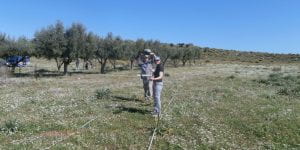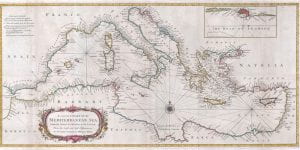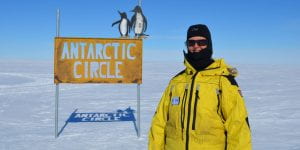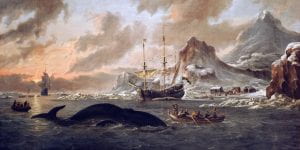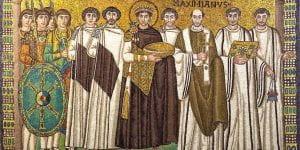dnicole
-
Welcome Dr Lieve Donnellan!
This semester we welcome Dr Lieve Donnellan, incoming Lecturer in Classical Archaeology. Lieve comes to the university from her previous role as Assistant Professor of Classical Archaeology at the University of Aarhus in Denmark. After graduating in archaeology from Ghent University in 2012, Lieve held various fellowships and positions at the Universities of Chicago, Göttingen […]blogs.unimelb.edu.au/shaps-research/2020/09/08/welcome-dr-lieve-donnellan
-
Pirates or Partners?
Famed as the home of the dreaded Barbary pirates, the ‘scourge of Christendom’, for many early modern Europeans and Britons, the Maghreb was a distant and terrifying place. Some, however, saw the corsairing states as legitimate military rivals, potential trading partners or allies, and even attractive places for migration and personal advancement. Recently, History PhD […]blogs.unimelb.edu.au/shaps-research/2020/09/08/pirates-or-partners
-
Exploring the History of Whales and Whaling
A number of our graduates go on to pursue careers in the GLAM sector – that is, Galleries, Libraries, Archives & Museums. Charlotte Colding Smith completed a PhD in History in 2010, and has gone on to work at a number of institutions and museums internationally. She is a Senior Expert Fellow at the German […]blogs.unimelb.edu.au/shaps-research/2020/09/04/exploring-the-history-of-whales-and-whaling
-
Body-makers and Farthingale-makers in Seventeenth-century London
By 1700 tailors no longer dominated England’s garment marketplace, as stay-makers, mantua-makers and seamstresses began to produce key items of female dress previously made by tailors. The demise of the tailoring monopoly was a complex process that involved many factors. On 3 September, our McKenzie Fellow, Sarah Bendall, presented the weekly Brown Bag talk, which […] -
From HPS to Saving Planet A
Recently, HPS Alumna Dr Zoë Loh featured on the ABC documentary Fight for Planet A in relation to her role as a senior research scientist at CSIRO. In this interview, Zoë spoke with Samara Greenwood about her love for History and Philosophy of Science and how it has contributed not only to her career, but […]blogs.unimelb.edu.au/shaps-research/2020/09/01/from-hps-to-saving-planet-a
-
Documenting Margel Hinder’s Contribution to Australian Modern Art
Earlier this year, Grimwade Centre Masters of Cultural Material Conservation students had the chance to work with Denise Mimmocchi, Senior Curator at the Art Gallery of New South Wales, in connection with a retrospective on the works of pioneering Australian-American artist Margel Hinder (1905–1985). The upcoming exhibition Margel Hinder: Modern in Motion at the Art […] -
The Bishop with 150 Wives
Francis Xavier Gsell is famous for his work among the Tiwi people, from whom he purchased the marriage rights to young women as part of a broad evangelisation strategy. A mythic figure in popular histories of the Northern Territory, Gsell is often remembered as the apocryphal ‘Bishop with 150 Wives’. But Gsell’s complex legacy has […]blogs.unimelb.edu.au/shaps-research/2020/08/17/the-bishop-with-150-wives
-
“Ffor Whalebones to it”: The Baleen Trade and Fashion in Sixteenth-century Europe
During the sixteenth century the bodies of Europe’s elites began to change in size and form as men and women adopted wide starched ruffs and collars, ballooning sleeves, stiffened or bombast upper garments and puffy lower garments. Such a structured silhouette set the tone for centuries of fashion and was the result of changing artistic […]blogs.unimelb.edu.au/shaps-research/2020/08/17/ffor-whalebones-to-it
-
Volcanic Winter and Pandemic Pandemonium
A terrible onslaught of bubonic plague in the sixth century abruptly ended Emperor Justinian’s dream of reunifying the Roman empire and caused massive geopolitical upheaval. Associate Professor Frederik Vervaet from Classics & Archaeology tells us more about this ancient pandemic and its consequences in this article republished from Pursuit. In 527 CE, when Emperor Justinian […]blogs.unimelb.edu.au/shaps-research/2020/08/16/volcanic-winter-and-pandemic-pandemonium
-
Chris Bendle
Chris Bendle, ‘The Office of Magister Militum in the 4th Century CE: A Study into the Political and Military History of the Later Roman Empire’ (MA in Classics & Archaeology, 2020) The magistri militum were the highest-ranking generals of the late Roman imperial army. Emperor Constantine I created this office in the early part of […]
Number of posts found: 426
